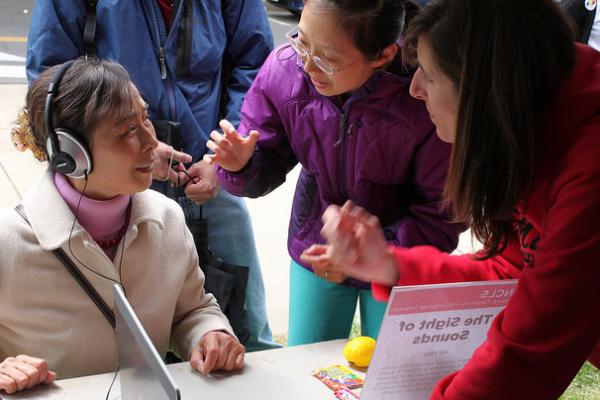What have we learned: 5 years’ progress in 2 minutes
The Language Science IGERT Program (2008-2015) is the University of Maryland’s only award through the National Science Foundation’s flagship interdisciplinary graduate training program. NSF’s $3M investment served as a catalyst for the broader language science initiative at UMD and was recently institutionalized as the Maryland Language Science Center. The student training component is currently being developed as the Maryland Language Science Center Fellows program which is scheduled to accept its first applications in Spring 2014.
In the first five years of the program we learned a lot about interdisciplinary training. Some things were expected, some were surprises. Here’s a brief summary. If you want to see more, check out the program’s document depository.
The IGERT program’s goals were to create:
- a model of interdisciplinary student training
- a broader language science community
- sustainability and institutionalization
- local and national impact
We have learned several lessons among which the following are the most important:
- the biggest impact is created by student ownership of program activities
- interdisciplinary training requires much more than broad coursework and exposure to diverse ideas and skills
- training should prepare for lifelong adaptability
- training should prepare entrepreneurial scientists
- students change fastest, new faculty next, established faculty slowest
- regular formative assessment really works
- culture change can happen, but not overnight
50 students, drawn from 10 departments and programs, pursued the full program and 30+ other PhD students benefited from it. 50 faculty members contributed as mentors, course instructors, workshop leaders, research team leaders, or rotation supervisors. 12 new language science faculty were hired since 2008 and the interdisciplinary community played a key role in recruiting them.
Our students from the 2008 and 2009 cohorts have graduated and 4 of them have been offered tenure track positions. Other students received postdocs at Harvard, Illinois, Haskins/Yale, UC San Diego, McGill, Paris, San Sebastian, CASL, UMD.
The program’s goals have been achieved through a vast array of activities which ranged from excellent interdisciplinary courses to year-round outreach activities or leadership developing activities. Below is only a very brief listing of these:
INTERDISCIPLINARY COURSES
12 interdisciplinary seminars 2009-13
Courses regularly take students outside of their ‘comfort zone’
Students take on average 15 courses; 5 outside of their home department
STUDENT LEADERSHIP COMMITTEES
Students took over program leadership and ownership in 2009
5 very active committees run activities
OUTREACH PROGRAM
Many annual events benefiting hundreds of K-12 students and community members
Excellent benefit to student training
Building networks of professionals
RESEARCH ROTATIONS
Integrated research opportunities for advanced students
Many success stories with publications outside of main research area
WINTER STORM (5x)
Yearly intensive 2-week workshop with:
Research planning workshops
Student-led technical courses
Daily faculty lunch talks
Professional development workshops
‘Science is social’ events
INDIVIDUAL TRAINING & MENTORING
Student ‘apprentices’ develop detailed research proposal in Year 1
Self assessment report and feedback ensure excellent academic progress
YEAR-ROUND ACTIVITIES
Weekly student lunch talks to interdisciplinary audience
Student research groups emerged from Winter Storm
LANGUAGE SCIENCE DAY
Annual celebration of language science at the University of Maryland
Showcase of research activities collaborative opportunities
Present student training possibilities
Interdisciplinary connections
175 participants in 2012; 230 in 2013
For more information about the program visit the Maryland Language Science Center or the IGERT program‘s page.








